#Princess Gisela of Bavaria
Text
Based Martina Winkelhofer

#finally a historian that isn't obssessed with the looks of historical figures#AND one that isn't afraid to state that we just don't know enough about Gisela and her mother!#Brigitte Hamann's bias comes particularly strong on this point. she actively evoids mentioning that Elisabeth was visibly moved#at gisela's wedding (she cried!!!) and makes it look as if she only cared about looking prettier than the bride#gisela of austria princess of bavaria#empress elisabeth of austria#historian: martina winkelhofer
34 notes
·
View notes
Text

Marcus Grüsser, Jannik Schümann, Arian Wegener, Dominique Devenport, Kristina Schroeter and Tanja Schleiff as Maximilian "Max", The Duke in Bavaria, Emperor Franz Joseph, Crown Prince Rudolf, Empress Elisabeth, Archduchess Gisela and Countess Esterházy in a new still from the third season of Sisi (2021).
#Sisi#Sisi (2021)#costume drama#historical drama#period drama#marcus grüsser#jannik schümann#Arian Wegener#dominique devenport#Kristina Schroeter#Tanja Schleiff#maximilian in bavaria#emperor franz joseph#Franz Joseph of Austria#Elisabeth in Bavaria#elisabeth of austria hungary#elisabeth of austria#archduchess gisela of austria#Countess Sophie Esterházy#princess sophie of liechtenstein#german tv#german series#sisi.rtl#armands virbulis
7 notes
·
View notes
Text
SAINT OF THE DAY (July 13)

On July 13, the Catholic Church celebrates the memory of St. Henry II, a German king who led and defended Europe's Holy Roman Empire at the beginning of the first millennium.
St. Henry was born on 6 May 973 to Duke Henry of Bavaria and Princess Gisela of Burgundy.
He was the great-grandson of German king, Henry the Fowler, and a member of the Bavarian branch of the Ottonian dynasty.
During his youth, Henry received both an education and spiritual guidance from a bishop who was himself canonized, St. Wolfgang of Regensberg.
Henry was an intelligent and devout student. For a period of time, he was considered for the priesthood.
St. Wolfgang's lessons in piety and charity left a lasting mark on Henry's soul. But it was ultimately in the political realm, not the Church, that he would seek to exercise these virtues.
He took on his father's position as Duke of Bavaria in 995, one year after St. Wolfgang's death.
The Church supported his accession to the throne as King of Germany in 1002.
As king, Henry encouraged the German bishops to reform the practices of the Church in accordance with canon law.
During the same period, he is said to have brought a peaceful end to a revolt in his territory, which ended with the king mercifully pardoning the rebels.
Henry also acted decisively, but not harshly, against an Italian nobleman who set himself up as a rival king.
In 1014, the German king journeyed to Rome where Pope Benedict VIII formally crowned him as head of the Holy Roman Empire.
The emperor demonstrated his loyalty to the Pope by confirming Benedict VIII's authority over the city of Rome.
Henry made his journey from Rome back to Germany into a pilgrimage of sorts, stopping at various monasteries along the way.
Henry became a great patron of churches and monasteries, donating so much of his wealth to them that his relatives complained that he was behaving irresponsibly.
However, Henry was far from irresponsible, as his leadership of the Western Empire in both war and peace demonstrated.
The emperor was also a great patron of the poor, making enormous contributions for their relief.
The emperor's extraordinary generosity was made possible in part by his lack of an heir.
He was married to a woman who was later canonized in her own right, St. Cunigunde of Luxembourg, but the two had no children.
Some accounts say that the couple took vows of virginity and never consummated their marriage, though this explanation of their childlessness is not universally accepted.
For the last several years of his life, Henry had to deal with serious illness and an additional ailment that crippled his left leg, along with his imperial responsibilities.
He found support in prayer during these trials and seriously considered resigning his imperial leadership in order to become a monk.
After several years of illness, Henry II died without an heir on 13 July 1024. He was the last ruler of the Ottonian line.
The public mourned sincerely for the monarch who had managed to lead his earthly kingdom so responsibly without losing sight of the Kingdom of God.
Pope Eugene III canonized him in 1146.
14 notes
·
View notes
Text
Empress Elisabeth of Austria-Hungary
Empress Elisabeth of Austria-Hungary was born on December 24th, 1837 as Duchess Elisabeth Amalie Eugenie to Duke Maximilian and Princess Ludovika of Bavaria. Elisabeth was called Sisi. The majority of her childhood was spent at Possenhofen Castle in Bavaria, Germany. Aside from her parents unhappy marriage due to her fathers affairs, Sisi and her seven (surviving) siblings had a relatively happy childhood. Sisi enjoyed being outside the most. She would swim in the lake and go horseback riding. Below is presumably the first photo taken of Sisi when she was a little girl.
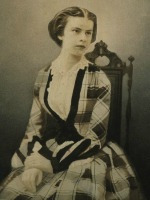
Emperor Franz Joseph l’s mother Archduchess Sophie, also Ludovika’s sister, had contacted Ludovika and told her than Sisi’s older sister Helene would be engaged to Franz Joseph. Franz and Helene were set to meet at the Kaiser villa in Bad Ischl. Ludovika decided to take Sisi along with them to help Helene adjust to the imperial lifestyle. Sisi was 15 and Helene was 18 at the time. Below is an image of Helene as a young adult (maybe 18-19)
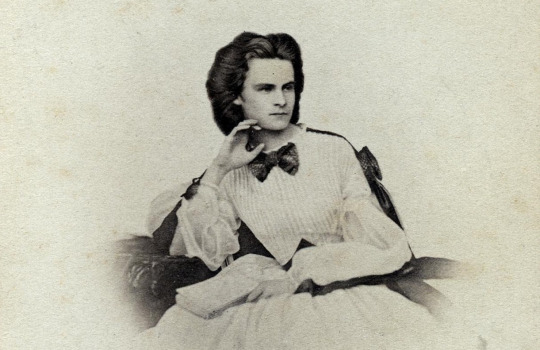
Franz Joseph was not known for disagreeing with his mother, much less defying her. Imagine the courts surprise when Franz decided to marry Sisi instead of Helene. Franz and Sisi’s engagement was announced 5 days after they’d met. On April 24th, 1854 Franz and Sisi were married in Vienna. Below is an image of Franz Joseph and Elisabeth.
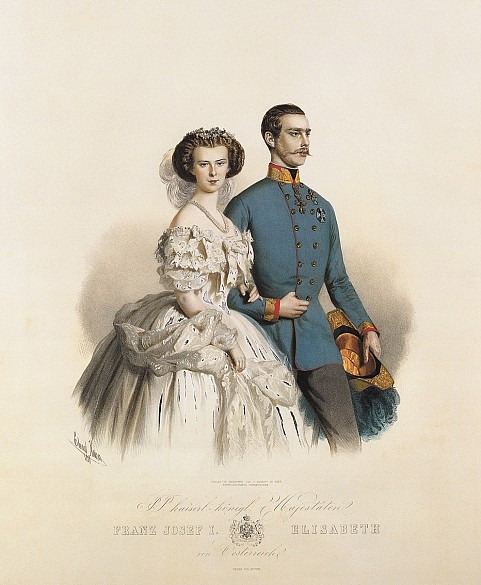
The Hapsburg court was known for being strict, formal, and steeped in tradition. Sisi was shocked when her life of freedom became a prison of protocol and formality. She never did adjust. Sisi had a horrible relationship with her mother-in-law. Archduchess Sophie believed that the Empress’s only duty was to produce an heir for the throne. Sophie believed that the Empress should never be involved in politics or affairs of the state. Sisi did not agree. She was adamant about improving the lives of the people in the Italian and Hungarian parts of the Austrian Empire and would regularly try to influence her husband. Below is an image of Archduchess Sophie.
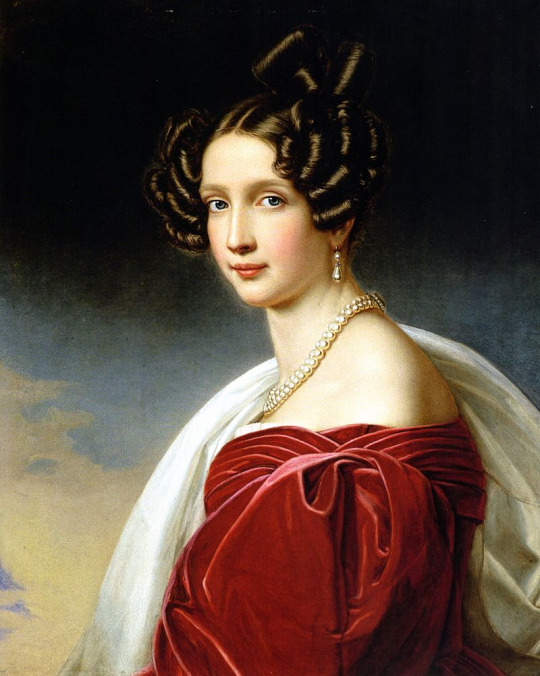
Even through the suffocation of Sophie’s constant pressure for a baby boy, Elisabeth did have four children. Her first was a baby girl, Sophie, born on March 5th, 1855. Her mother-in-law took the baby away from Sisi and named her after herself. Sophie refused to let Sisi take care of her baby. Then, Sisi had another baby girl, Gisela, on July 15th, 1856. Again, Sophie took the baby and Sisi couldn’t care for either of her children. The tragedy wasn’t over yet. In 1857, Sisi and Franz took a family trip with the girls to Hungary against the advice of both Sophie and the court physician. Both the girls became sick and Princess Sophie died. This caused Sisi to fall into a deep depression. Franz and Sophie brushed off her behavior. However, Sisi gave birth to another baby, but this time it was a boy. On August 21st, 1858 Crown Prince Rudolf was born. Rudolf was taken from Sisi and was raised by tutors at the age of 6. Sisi was blocked from the education of her children. In 1867 Sisi and Franz were crowned King and Queen of Hungary. A year later, Sisi gave birth to Marie Valerie on April 22nd, 1868. Below are images of Sisi’s children in order of birth.
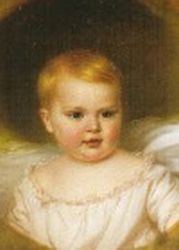

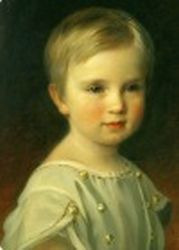

Sisi had very little control over many things in her life. However, one thing she did have control over was her body. She dieted constantly and became obsessed with her beauty. That’s how she kept her slender waist that she’s very famous for. Sisi spent a ton of time in Hungary with her youngest child. Sophie hated Hungary and this allowed Sisi to raise Marie on her own. Sophie died in 1872 and Sisi was finally free from her mother-in-law. There is one tragedy that Sisi would never get over. In 1889 Rudolf was found dead with his mistress which was done by their own hands.
On September 10th, 1898 Sisi was killed by an Italian Anarchist while boarding a boat in Geneva. She was stabbed in the heart and had not realized what had happened to her. She died a few hours later.
Source: https://www.palaces-of-europe.com/empress-sisi.html
3 notes
·
View notes
Photo

Princess Gisela of Bavaria, nee Archduchess of Austria, with two of her children.
#Princess Gisela of Bavaria#Archduchess Gisela of Austria#Princess of Bavaria#Archduchess of Austria#Hapsburg#Wittelsbach#Royalty#History#Princess
15 notes
·
View notes
Photo

Princess Gisela of Bavaria, neé Archduchess of Austria, and company in a mine. 1880s
#antique#vintage#victorian#1880s#19th century#royalty#austria#Habsburg#Archduchess Gisela of Austria#princess Gisela of Bavaria
55 notes
·
View notes
Photo

A Princess is Pardoned
The romantic marriage of Elizabeth of Bavaria, granddaughter of the Prince Regent, had a happy sequel today. After sixteen years of banishment the princess, who chose to marry a Protestant lieutenant has been permitted to return to the Bavarian court.
The princess, who is a Catholic, fell in love in 1893 with Lieutenant Baron Siegfried auf Buttenheim. Her parents, Prince Leopold of Bavaria and Archduchess Gisela of Austria, refused to consent to the wedding. Consequently the couple fled together to Italy and were married in Milan. Meanwhile a warrant had been issued for the arrest of the lieutenant in cause he should return to Bavaria. The pair then went to Vienna, where the princess pleaded with her grandfather, Emperor Francis Joseph, who finally allowed her husband to enter the Austrian service and gave the princess a residence and an allowance.
After the baron had been promoted to the rank of captain he was transferred to the reserves and the couple lived quietly in the provinces with their children. The princess dropped her royal title and was known as Baroness auf Buttenheim. They were often visited by the Austrian Emperor, who tried to influence the princess' parents to forgive her. He eventually succeeded in inducing Archduchess Gisela to pardon her daughter. At the same time he interviewed with the Prince Regent, who has now softened his heart and invited the banished couple to visit the Bavarian court with their children.
-The Sabbath Recorder, 1909
#Princess Elizabeth Marie of Bavaria#1900s#bavarian royal family#austrian royal family#Count Otto of Seefried and Buttenheim#magazine article#Emperor Franzi Josef#Archduchess Gisela
42 notes
·
View notes
Text

Portrait of Archduchess Gisela of Austria, Princess Leopold of Bavaria, 1885, by Friedrich August von Kaulbach (1850-1920)
#art#portrait#archduchess gisela#austria#germany#german art#19th century#1880s#friedrich august von kaulbach
114 notes
·
View notes
Text


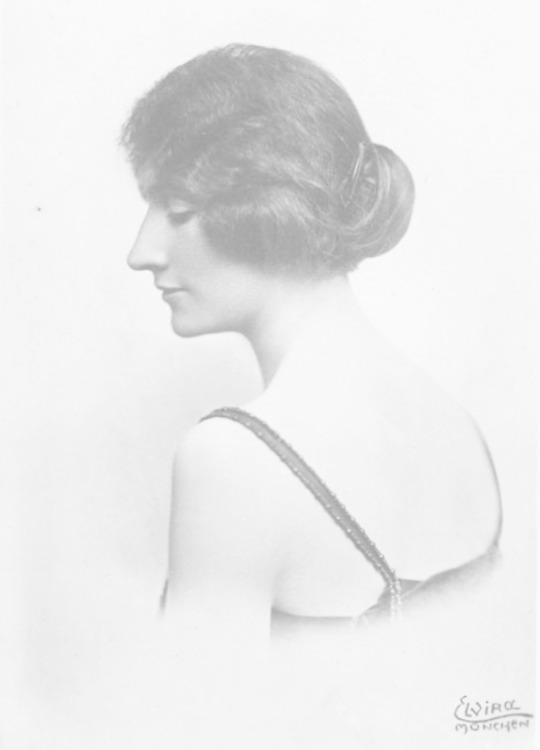
Italian beauty, 1921.
Princess Konrad of Bavaria née Princess Maria Bona of Savoy-Genoa, shortly after her marriage.
She was the daughter-in-law of Archduchess Gisela of Austria and first cousin to Victor Emmanuel III, King of Italy.
#princess konrad of bavaria#princess maria bona of savoy-genoa#savoy#savoy-genoa#german royalty#german royal#bavarian royal family#1920s#italian royalty#italian royal family#italian royal#beauty#1921
34 notes
·
View notes
Photo

Prince Georg of Bavaria, the elder son of Prince Leopold of Bavaria and his wife Archduchess Gisela of Austria, in December 1911 he became engaged to Archduchess Isabella of Austria, daughter of Archduke Friedrich, Duke of Teschen, and his wife, Princess Isabella of Croy. The couple honeymooned in Wales, Paris and Algiers, but separated before the end of the honeymoon. There were several unsuccessful attempts at reconciliation. On 17 January 1913 the union was dissolved by the Royal Bavarian Supreme Court; on 5 March 1913 the union was annulled by the Holy See on the grounds of non-consummation. In 1919 Georg resigned his military commission and began studying theology in Innsbruck, Austria. He was ordained a Catholic priest on 19 March 1921 and shortly afterwards received a doctorate in canon law from the Catholic Faculty of Theology at the University of Innsbruck. He continued his religious studies in Rome and in 1925 graduated from the Pontifical Ecclesiastical Academy.
10 notes
·
View notes
Photo




Through the Years → Princess Sofia of Sweden (90/∞)
1 September 2018 | Prince Carl Philip of Sweden and his wife Princess Sofia of Sweden during the wedding of Prince Konstantin of Bavaria and Deniz Kaya at the french church 'Eglise au Bois' in St Moritz, Switzerland. (Photo by Gisela Schober/Getty Images)
6 notes
·
View notes
Note
Is it true that empress sissy was bad mother? Or just rumours
I think it really depends on what do you understand as being “a bad mother”. First of all royal women were not expected to be the main carers of their children: this job was divided among the many people in charge of the well-being of the kids. Parents usually only saw their kids little on a daily basis, since they did not even ate together. So one shouldn’t expect Elisabeth to have been changing diapers and heating milk bottles. The second thing to consider is just how young she was when she became a mother; giving birth to three consecutive babies in such a short time spam (with the additional stress of knowing everyone is expecting you to produce an heir) must have take a huge toll on her, so I don’t think is that surprising if she didn’t smoothly adjust to the role of mother.
Even so, she did love her children, as this letter she wrote to a Bavarian relative soon after the birth of her first child shows:
My little one really is already very charming and gives the Emperor and me enormous joy. At first it seemed very strange to me to have a baby of my own; it is like an entirely new joy, and I have the little one with me all day long, except when she is carried for a walk, which happens often while the fine weather holds. (Hamann, 1986)
But Elisabeth had no control in how her eldest children were raised: her mother-in-law, Archduchess Sophie, took charge of them. Something important to keep in mind, however, is that taking charge of them doesn’t mean that she personally cared them (again, this wasn’t the role of royal woman), but that she chose the staff of nursemaids, nannies, governesses and tutors that oversaw the children’s caring and later education. But this lack of control over her children ended up being a great source of sorrow for the young mother.
During this time the first big conflict between Elisabeth and Sophie arose: the children’s nursery was placed on the same floor as Sophie’s appartements, which meant that she could go over to see her granddaughters with a lot more of freedom than Elisabeth, whose appartements where on a different floor. Being on a different floor meant than she could only see her daughters during the times set by protocol, and always in company of her retinue of ladies and lackeys, which ended up limiting even more the time she could spend with them in privacy. She told to her lady-in-waiting Marie Festetics in 1872:
Only now do I understand what bliss a child means. Now I have finally had the courage to love the baby and keep it with me [her fourth child Marie Valerie]. My other children were taken away from me at once. I was permitted to see the children only when Archduchess Sophie gave permission. She was always present when I visited the children. Finally I gave up the struggle and went upstairs only rarely.
This statement comes from almost twenty-years after the events, so it should be taken with a bit of a grain of salt (in the first letter I quoted Elisabeth mentions that she had Baby Sophie with her “all day long”, so she wasn’t “taken away at once” as she claims here). The most important takeaway from this statement to me is that even after all those years the fact that she wasn’t allowed to see her girls freely hurt her. So it’s not surprising that her first act of “rebellion” at court was when she decided to move the nursery to her floor in 1856.
After successfully moving the nursery near to her appartements, slowly Sisi started to take more and more control of her children. At the end of 1856 Franz Josef and Elisabeth went on a state visit to Lombardy-Venice and they took Baby Sophie with them. This tour was relatively successful, and months later they tried to replicate its success on Hungary. For this tour the parents decided to take not only Baby Sophie but also Gisela, since it was planned to last two months and they didn’t want to be separated from their daughters for such a long time.
As it’s known, Baby Sophie sadly died of typhus during this trip. Although is often repeated that Archduchess Sophie blamed Elisabeth for the child’s death, she in fact was very sympathetic towards the young mother, since she also had lost an infant daughter and could understand her pain. But Elisabeth seemed to blame herself regardless, and soon fell into a deep depression that lasted months and filled her entire family with worry.
By the end of 1857 she showed signs of being pregnant again, and in September of 1858 she finally gave birth to the long awaited heir, Crown Prince Rudolf. And just as with her daughters, Elisabeth had no control over the boy’s upbringing.
In 1860 Elisabeth started to become ill - of what, nobody knew. I won’t go much into this (since that’s just an entirely different post), but by the end of the year, after exhausting all possible treatments, it was decided that the Empress should go away from court to recover from her mysterious illness. This was the beginning of Elisabeth’s two years trip - first to Madeira and then to Corfu. Franz Josef offered her to take Gisela with her, but since she couldn’t also take Rudolf (the heir had to remain in Vienna), she decided to leave her behind because she didn’t want to separate the siblings, who were very close (Winkelhofer, 2022).
Elisabeth returned a changed woman, much more confident in herself, no longer the shy girl who was easily intimidated by courtiers. But she still had no control over how her children were educated. Or that was until Rudolf started his formal education. At the age of six he was separated from his sister and governess, given his own household, and Count Gondrecourt was assigned as his tutor. Gondrecourt had the mission of “toughening up” the boy, since he was considered to be weak of mind; his method to achieve this consisted in psychologically torturing Rudolf, and after he fell ill, seemingly of a nervous collapse. When Elisabeth discovered what her son was going through she was horrified and decided to step in. So she did something almost unprecedented, not only for her personally, but also in general for a woman of her status: she gave her husband an ultimatum:
I wish to have reserved to me absolute authority in all matters concerning the children, the choice of the people around them, the place of their residence, the complete supervision of their education, in a word, everything is to be left entirely to me to decide, until the moment of their majority. I further wish that, whatever concerns my personal affairs, such as, among others, the choice of the people around me, the place of my residence, all arrangements in the house etc. be reserved to me alone to decide.
Even more surprisingly for the time, Franz Josef agreed, and gave her full control of the children’s education. Gondrecourt was dismissed and Colonel Josef Latour was personally chosen by Elisabeth in his place. Latour was highly unpopular at court because he wasn’t an aristocrat and had very liberal political ideas, but Elisabeth protected him and he kept his job. Latour ended up becoming a close friend to his pupil until his death. But even though she now had what she had always wanted, total control of her children’s upbringing, she never became really close to her eldest daughter and son.
This is the part in which we can talk about her being “a bad mother”. When you compare her relationship to her fourth and last child, Marie Valerie, born ten years after Rudolf out of her desire to have another baby, raised entirely by her (as always keeping in mind that this means she had full control of the staff that took care of Valerie), to how she was with Gisela and Rudolf, the clear favoritism is evident. It seems that she felt more distant towards the eldest, probably a combination of her not having a saying in their upbringing until they were older and her constant trips away from court didn’t help her to close the gap. Gisela, who was a very down-to-earth person, a lot like her father, doesn’t seem to have minded this (or at least she never showed it), but Rudolf always craved for a close relationship with his mother, which he never could truly have. He adored her and was always grateful for her intervention when he was little, but seeing how all his mother’s love and attention went towards Valerie made Rudolf jealous of his younger sister; because of this the siblings also never managed to become close.
Valerie ended up feeling overwhelmed by her mother’s love. Elisabeth was very emotionally dependent on her daughter and made her her constant companion and support, which isolated the girl from the rest of her family. Valerie adored her father and felt that her mother put her against him, and Elisabeth insistance in raising her as a Hungarian (Valerie’s mother tongue wasn’t German, but Hungarian) made her hate Hungary. She turned out to be quite different to what her mother had planned, and that was probably just the result of having so many expectations imposed on her since she was born. But even so Elisabeth loved her and only wanted her to be happy. And this is shown by the fact that (unlike Queen Victoria with her daughter Beatrice) she didn’t want her to stay by her side forever, but to marry for love and form her own family. So she supported her decision to marry Archduke Franz Salvator, who out of all her suitors was the least favorite (Franz Josef wanted her to marry the Crown Prince of Saxony and Rudolf Archduke Eugen).
So was she a bad mother? It’s complicated. She loved her children (and I do think she loved all of them, despite Gisela being often considered the “forgotten” child), fought to have control on how to raise them (which was unusual for the time) and when she lost them she deeply grieved them. But she couldn’t be the support that her son needed, and the child she did gave her constant love felt suffocated. Sometimes an answer isn’t as a easy as yes or not, and I think we should keep that in mind when looking at Elisabeth as a mother. I hope you find my answer helpful, and sorry if it’s too long!
SOURCES:
Hamann, Brigitte (1986). The Reluctant Empress: A Biography of Empress Elisabeth of Austria (translation by Ruth Hein)
Winkelhofer, Martina (2022). Sissi. La vera storia. Il camino della giovane imperatrice (translation by Federica Saccucci)
#empress elisabeth of austria#sophie of bavaria archduchess of austria#archduchess sophie of austria#gisela of austria princess of bavaria#crown prince rudolf of austria#archduchess marie valerie of austria#asks
16 notes
·
View notes
Text
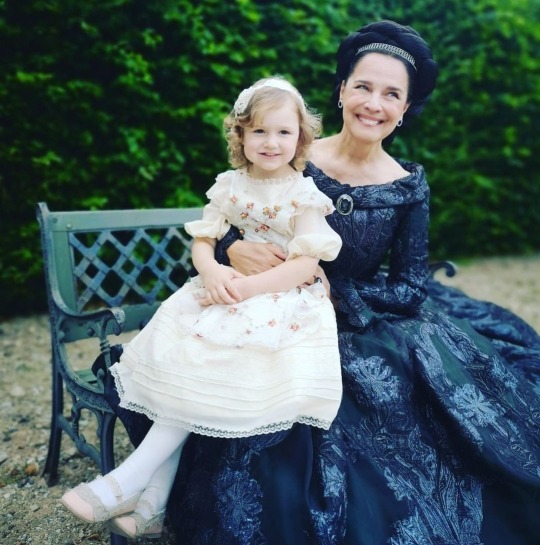
Désirée Nosbusch (Archduchess Sophie) and Lote (Archduchess Gisela) behind the scenes of the second season of Sisi (2021).
#Sisi#sisi (2021)#costume drama#historical drama#period drama#Désirée Nosbusch#Lote#archduchess sophie of austria#princess sophie of bavaria#archduchess gisela of austria#german series#german tv#behind the scenes#sisi.rtl
9 notes
·
View notes
Photo





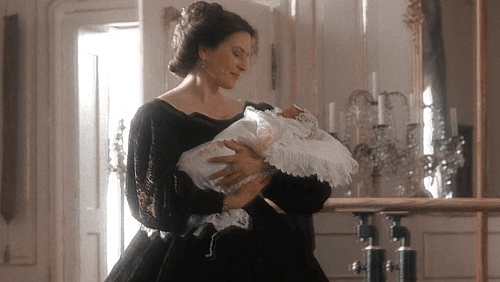
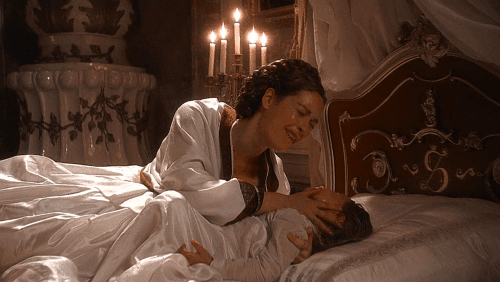

House of Habsburg: Archduchess Sophie of Austria
Sophie was born as the first child to Emperor Franz Joseph and his wife and first cousin Elisabeth “Sisi” in Bavaria. Her younger siblings are Archduchess Gisela, Princess Leopold of Bavaria, Crown Prince Rudolf of Austria-Hungary and Archduchess Marie Valerie, Princess of Tuscany.
Sophie was named after her paternal grandmother Princess Sophie of Bavaria who also assumed the role of raising her and her younger sister Gisela soon after their births. Sophie thought their mother Elisabeth to be too young to raise royal children herself. Elisabeth had only been 17 when Sophie was born. Elisabeth was only allowed to see her daughters when Sophie allowed it. She, of course, protested against that but only a meager success.
Elisabeth and Franz Joseph decided to travel to Hungary in the Spring of 1857 and to take along their two young daughters. When visiting Budapest, Sophie as well as her sister Gisela fell ill with diarrhea and very high fevers. While Gisela quickly recovered, Sophie did not. She died in her mother’s arms after eleven hours of fighting at 9:15pm on May 29th. The reason of death is either dehydration or convulsions. Some even theorize typhus fever as the illness that befell her but that remains to be proven.
Sophie’s body was taken back to Vienna and she is buried in the Imperial Crypt. Her death would follow her mother for the rest of her life. Her mother-in-law and aunt blamed her for Sophie’s early death and took over raising the imperial children entirely. But Elisabeth also did not seem interested in her other children anymore. Until her own tragic death, she worse a bracelet with a portrait of Sophie and kept a painting of her in her rooms. 37 years after her death, her father allowed a path at the Croatian Plitvice Lakes to named after her third and fourth names Dorothea and Maria. The path is still called Dorotejin put (Dorothea’s path) to this day.
// Unknown child actress in Sisi (2009)
______________________________________________________________
Requested by anonymous
#period drama#perioddramaedit#historyedit#Austrian history#1800s#19th century#Victorian Era#Archduchess Sophie of Austria#Sisi (2009)#Hungarian history#European history#House of Habsburg#House of Habsburg-Lorraine
231 notes
·
View notes
Text
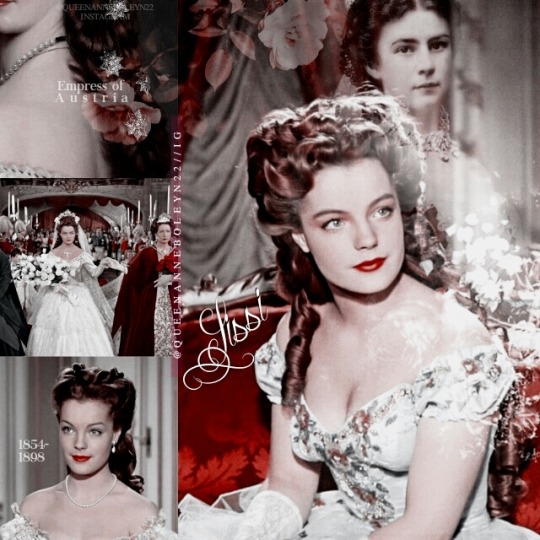
On this day in history Empress Sissi was born.
Elisabeth was the fourth child of Duke Maximilian Joseph in Bavaria and Princess Ludovika of Bavaria. Duke Maximilian was a bit eccentric and decidedly more progressive in his ideals than his fellow European aristocrats, which heavily influenced Elisabeth's beliefs and upbringing.
Franz Joseph and Elisabeth married on April 24, 1854. The period of their engagement had been a strange one: Franz Joseph was reported by all to be full of joy, but Elisabeth was quiet, nervous, and often found crying. Some of this could certainly be attributed to the overwhelming nature of the Austrian court, as well as the reportedly overbearing attitude of her aunt-turned-mother-in-law.The Austrian court was intensely strict, with rules and etiquette that frustrated the progressive-minded Sisi. Even worse was her relationship with her mother-in-law, who refused to cede power to Elisabeth, who she viewed as a silly girl incapable of being an empress or mother. When Elisabeth and Franz Joseph had their first child in 1855, the Archduchess Sophie, Sophie refused to allow Elisabeth to care for her own child or even name her. She did the same to the next daughter, Archduchess Gisela, born in 1856.
Elisabeth was shattered with yet another tragedy in 1889 when her son Rudolf died in a suicide pact with his mistress Mary Vetsera.
Elisabeth was traveling incognito in Geneva, Switzerland in 1898 when news of her presence leaked. On September 10, she and a lady-in-waiting were walking to board a steamer when she was attacked by Italian anarchist Luigi Lucheni, who wanted to kill a monarch, any monarch. The wound was not evident at first, but Elisabeth collapsed soon after boarding, and it was discovered that Lucheni had stabbed her in the chest with a thin blade. She died almost immediately. Her body was returned to Vienna for a state funeral, and she was buried in the Capuchin Church. Her killer was apprehended, tried, and convicted, then committed suicide in 1910 while in prison.
#sissi#empress sissi#elizabeth of austria#romy schneider#history#history edit#on this day in history#empress of austria#franz josef#elizabeth of bavaria
142 notes
·
View notes
Photo
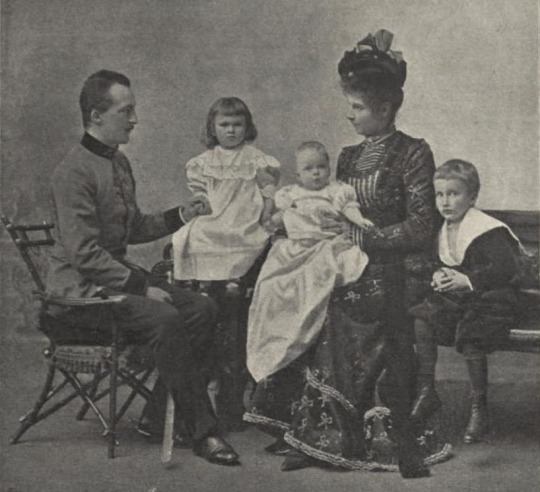
Archduke Auguste of Austria, nee Princess of Bavaria, with her husband, Joseph August, and their children.
#Archduchess Auguste of Austria#Princess Auguste of Bavaria#Archduchess of Austria#Princess of Bavaria#Archduchess Gisela of Austria#Wittelsbach#Hapsburg#Royalty#History#Princess
14 notes
·
View notes